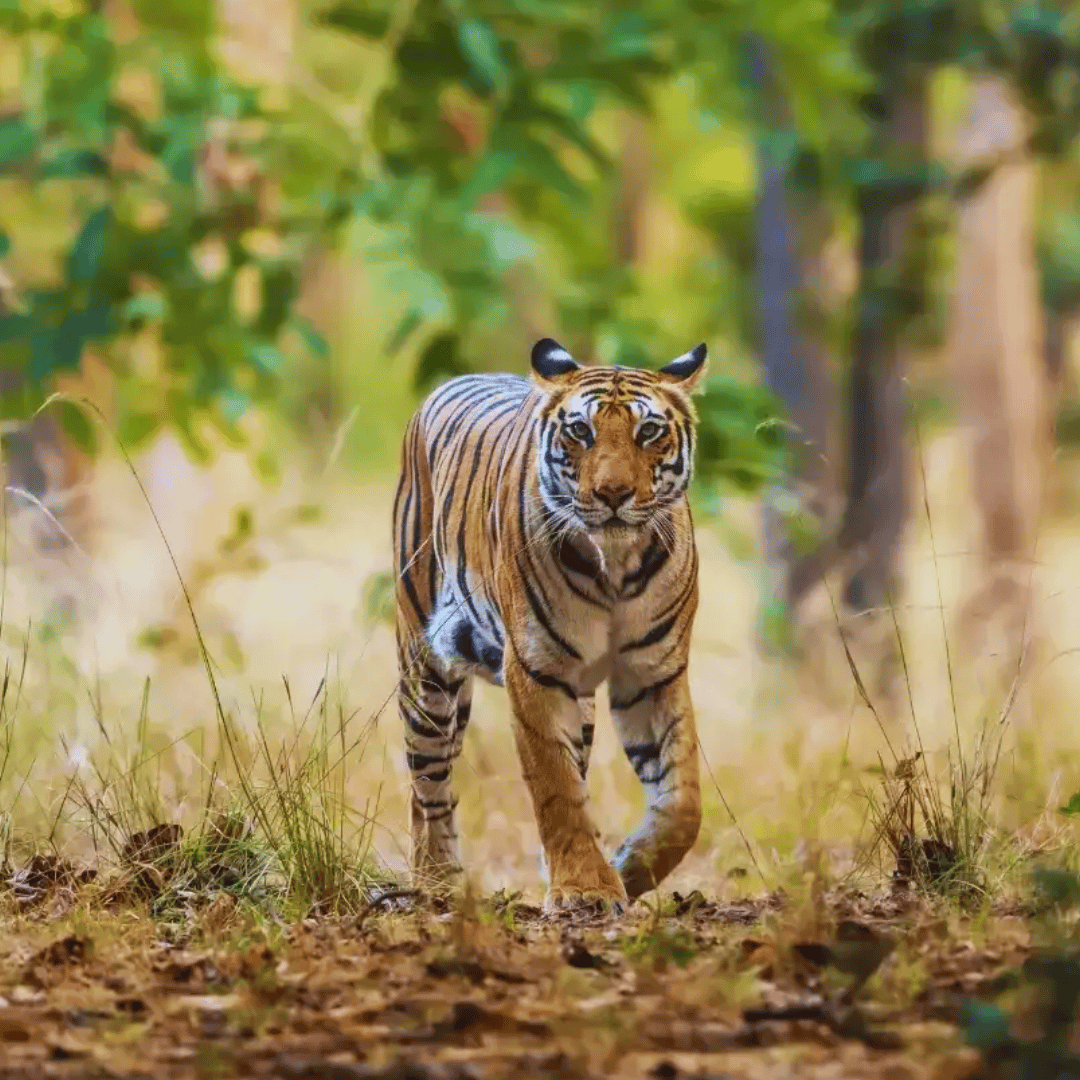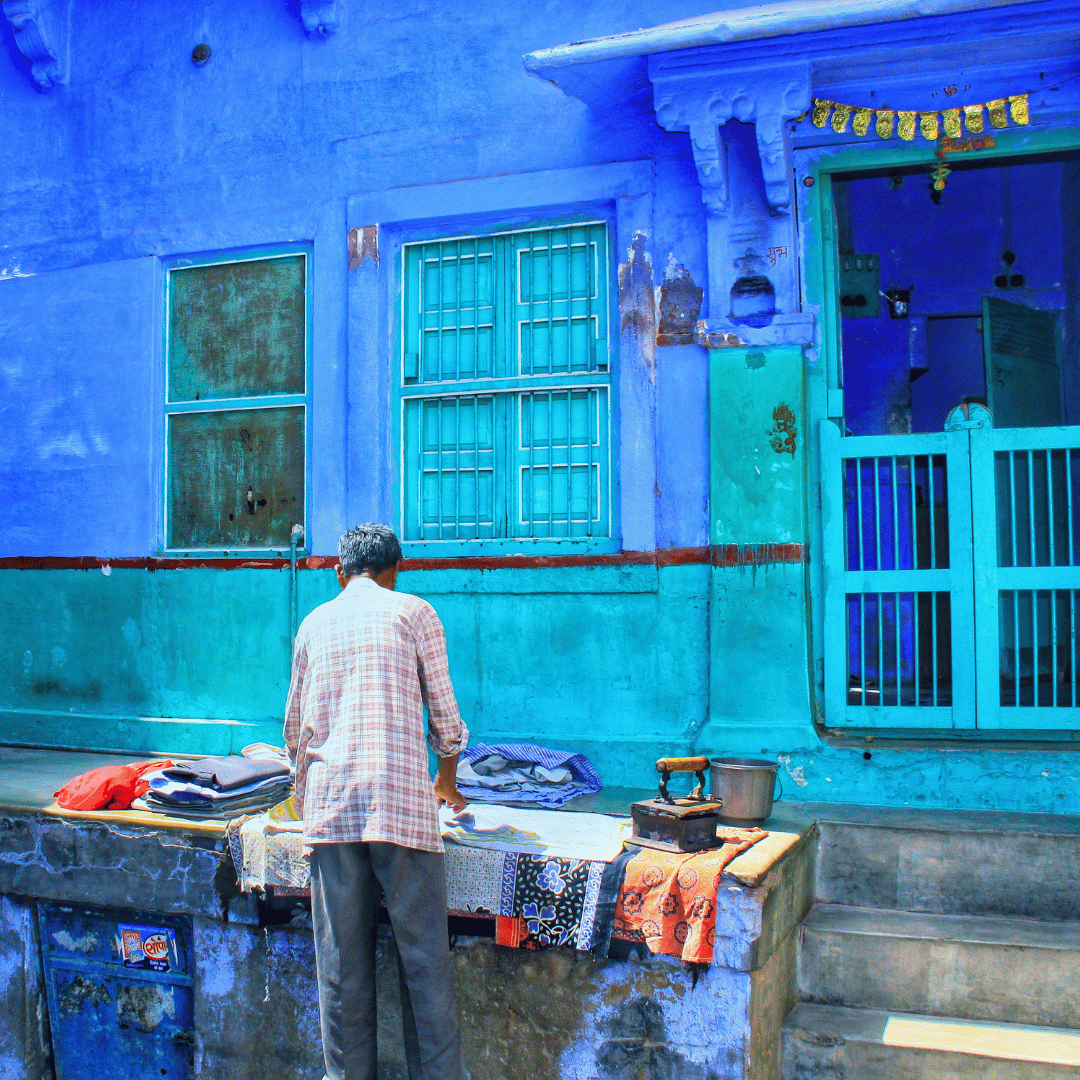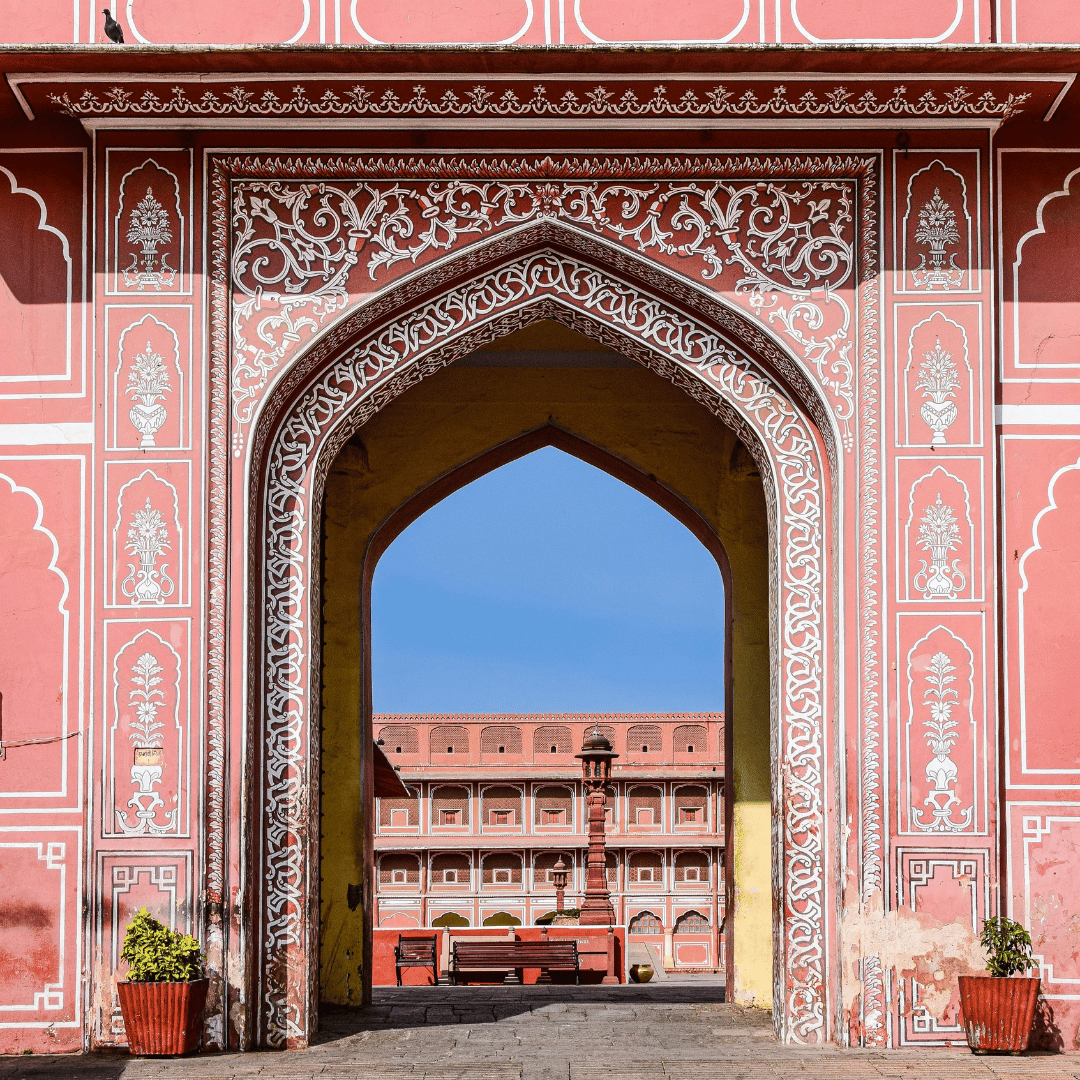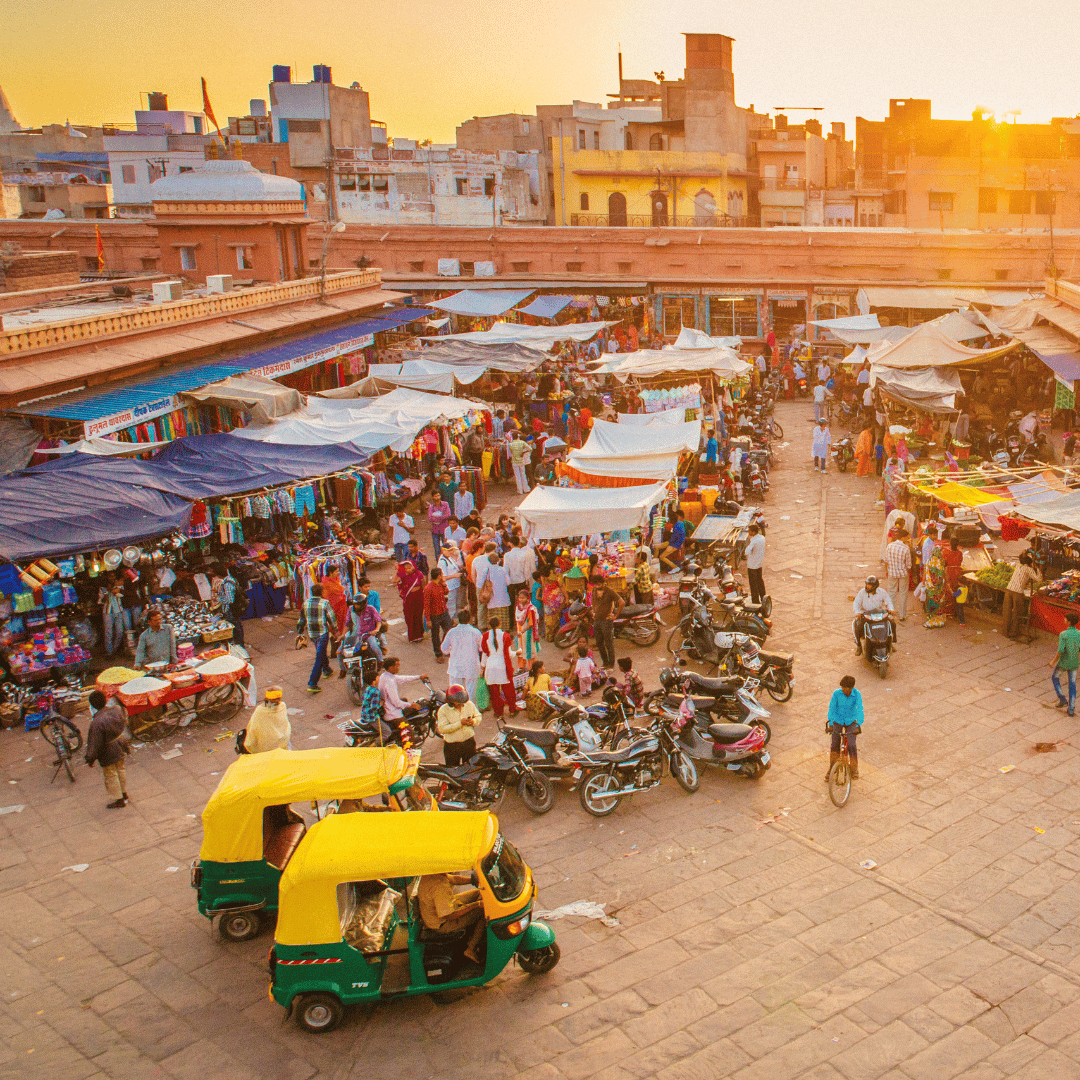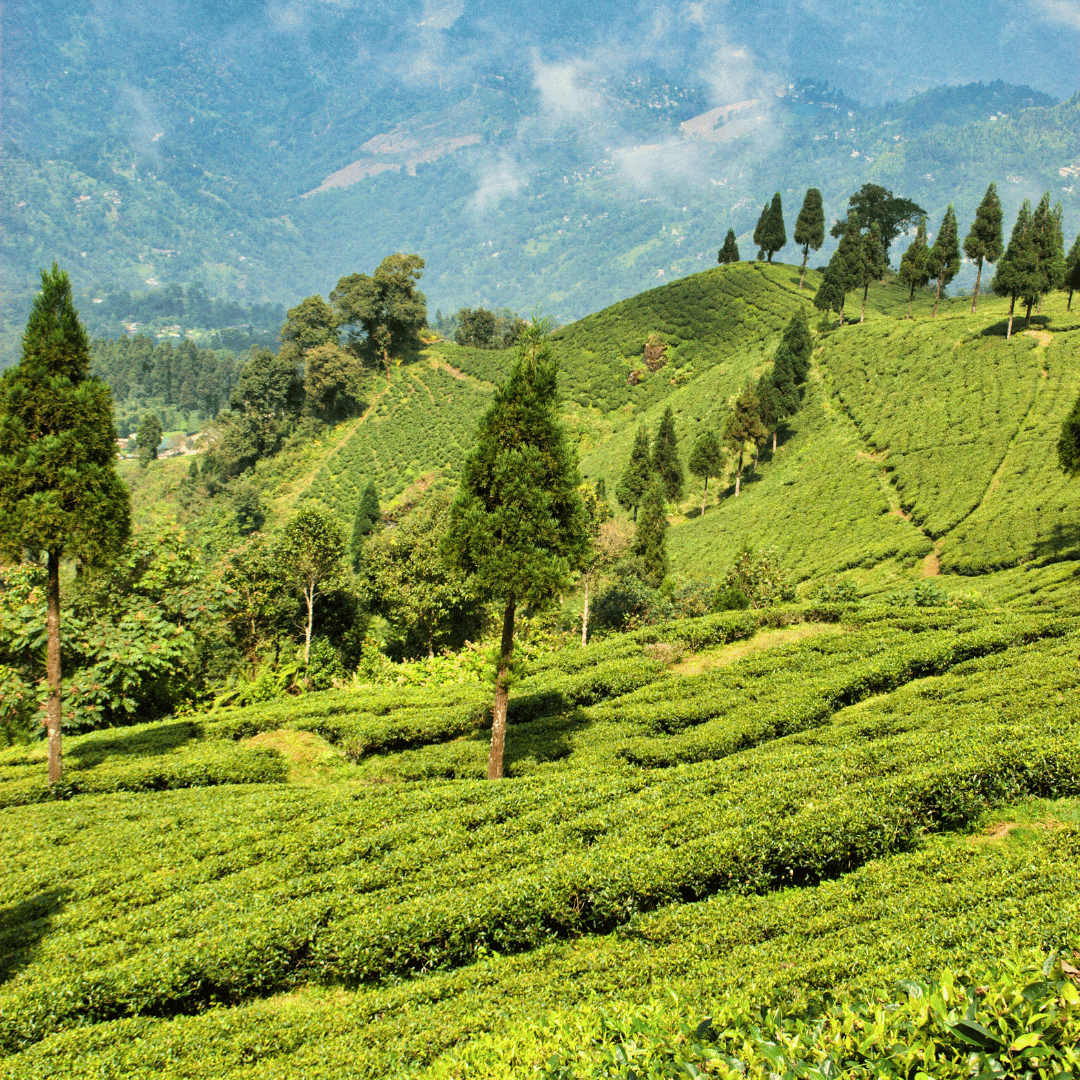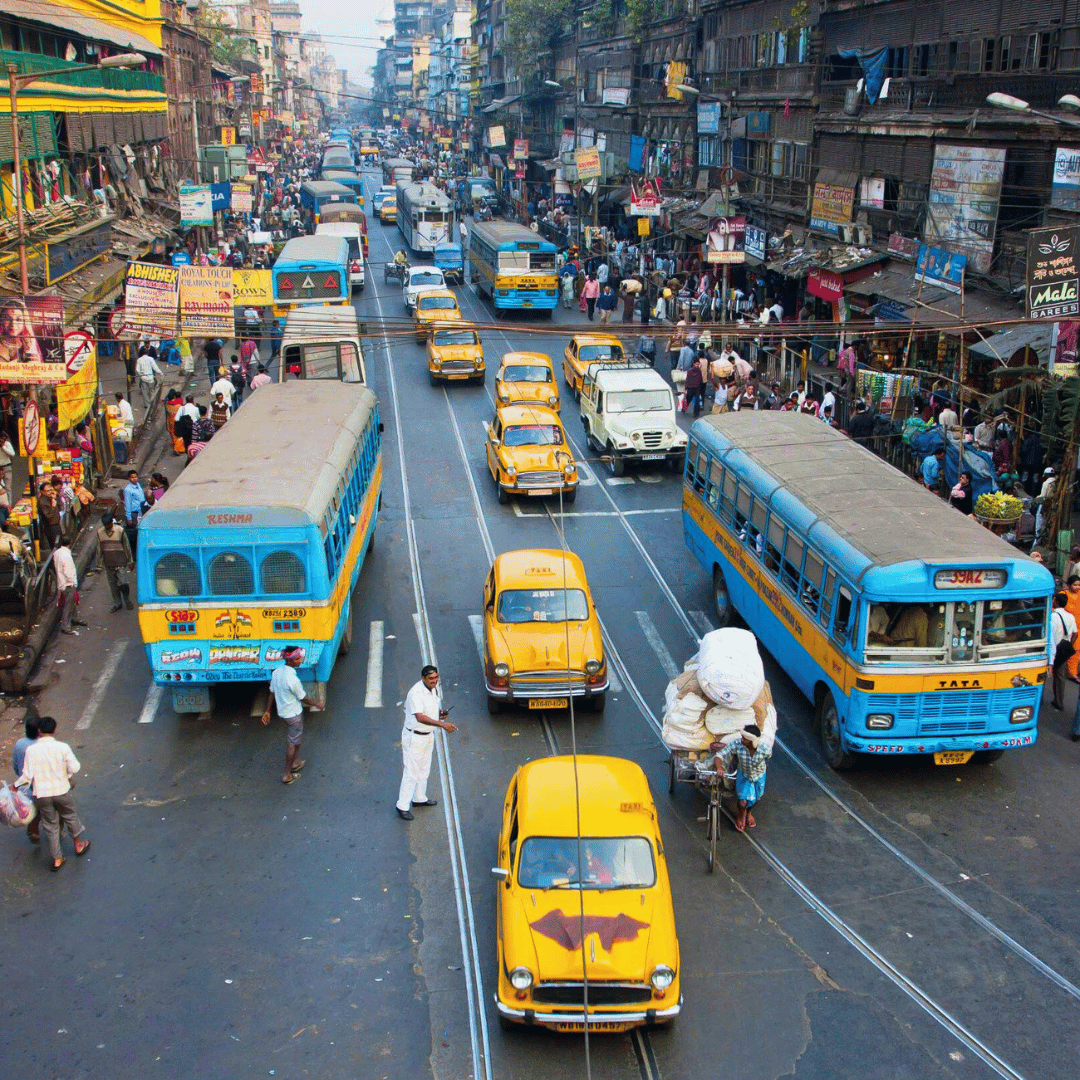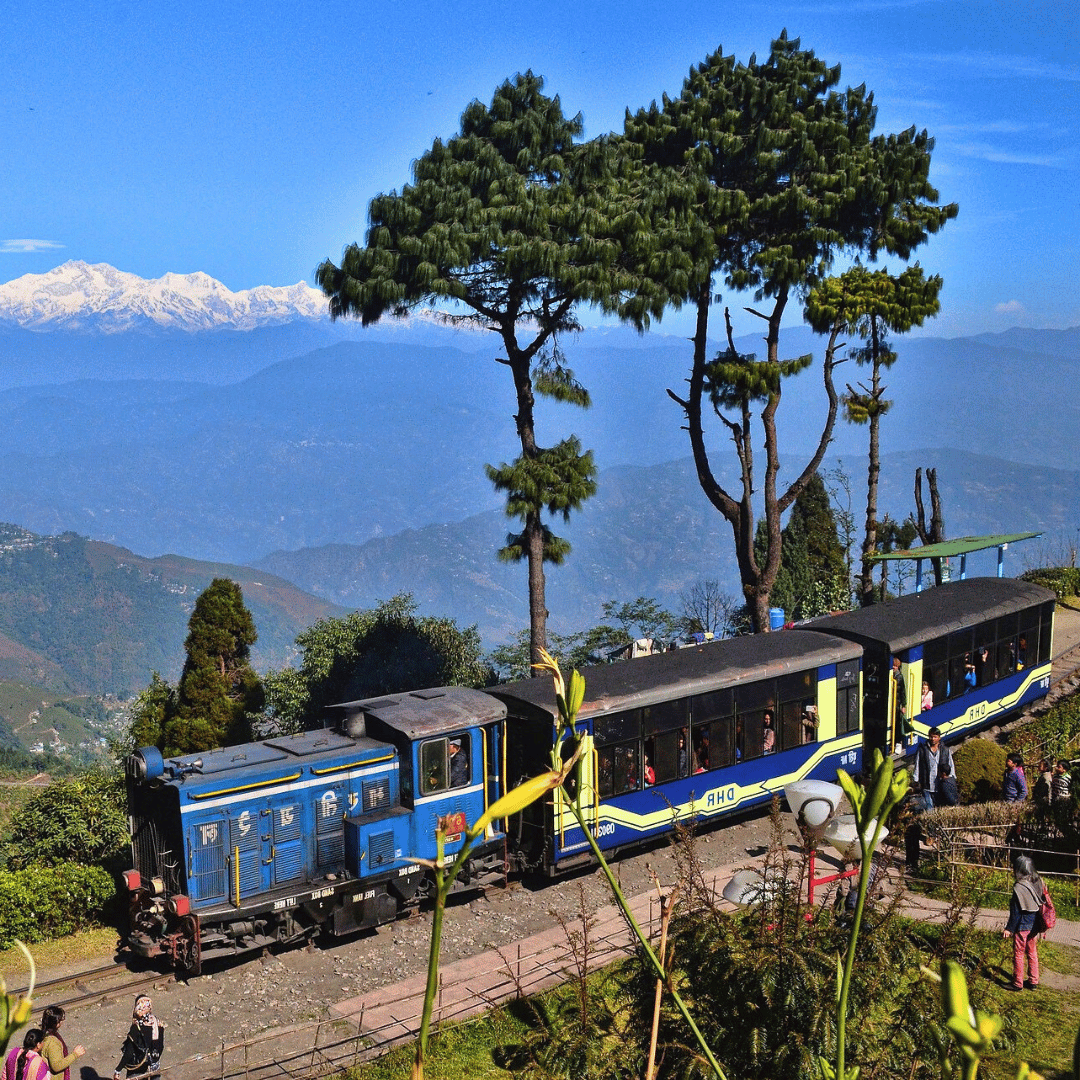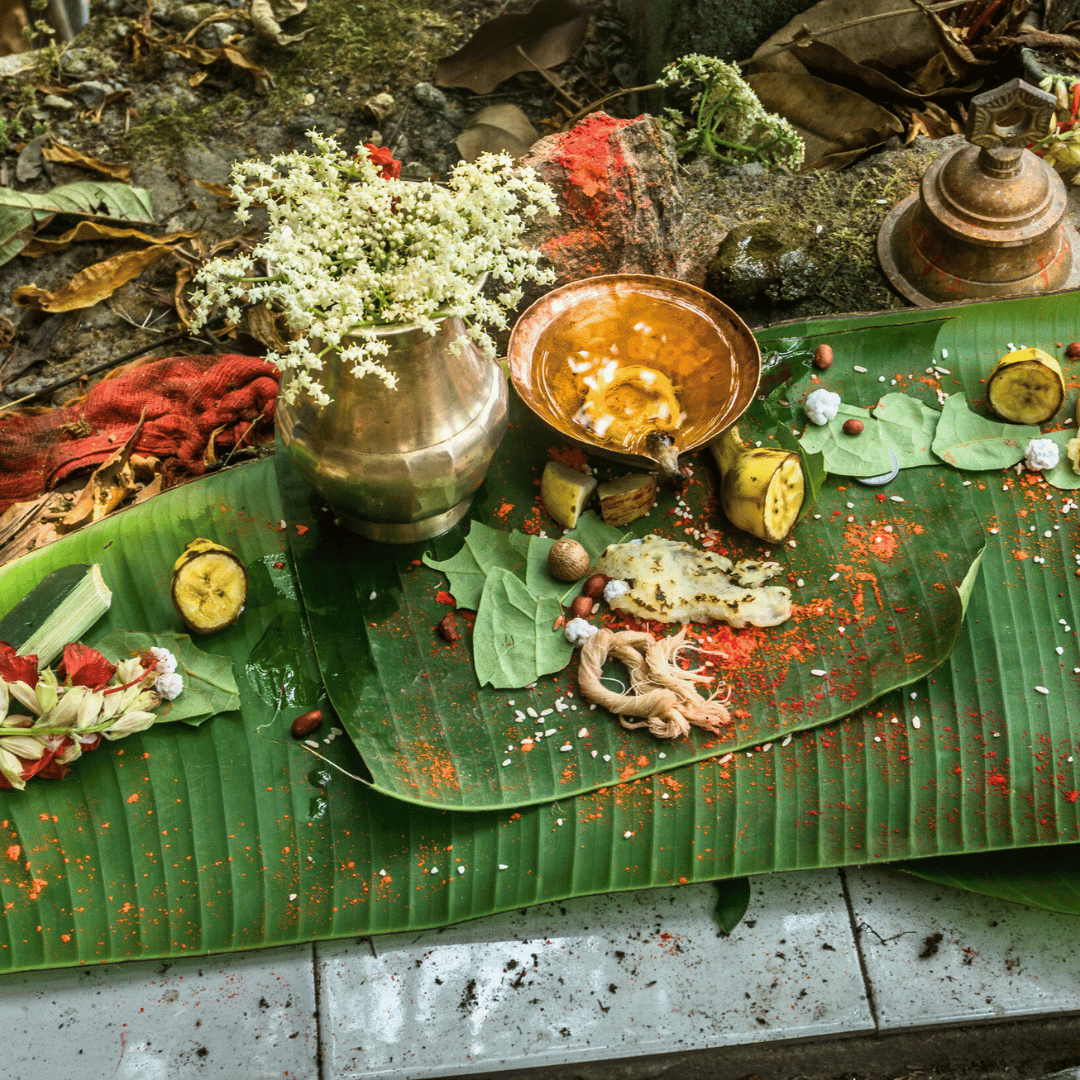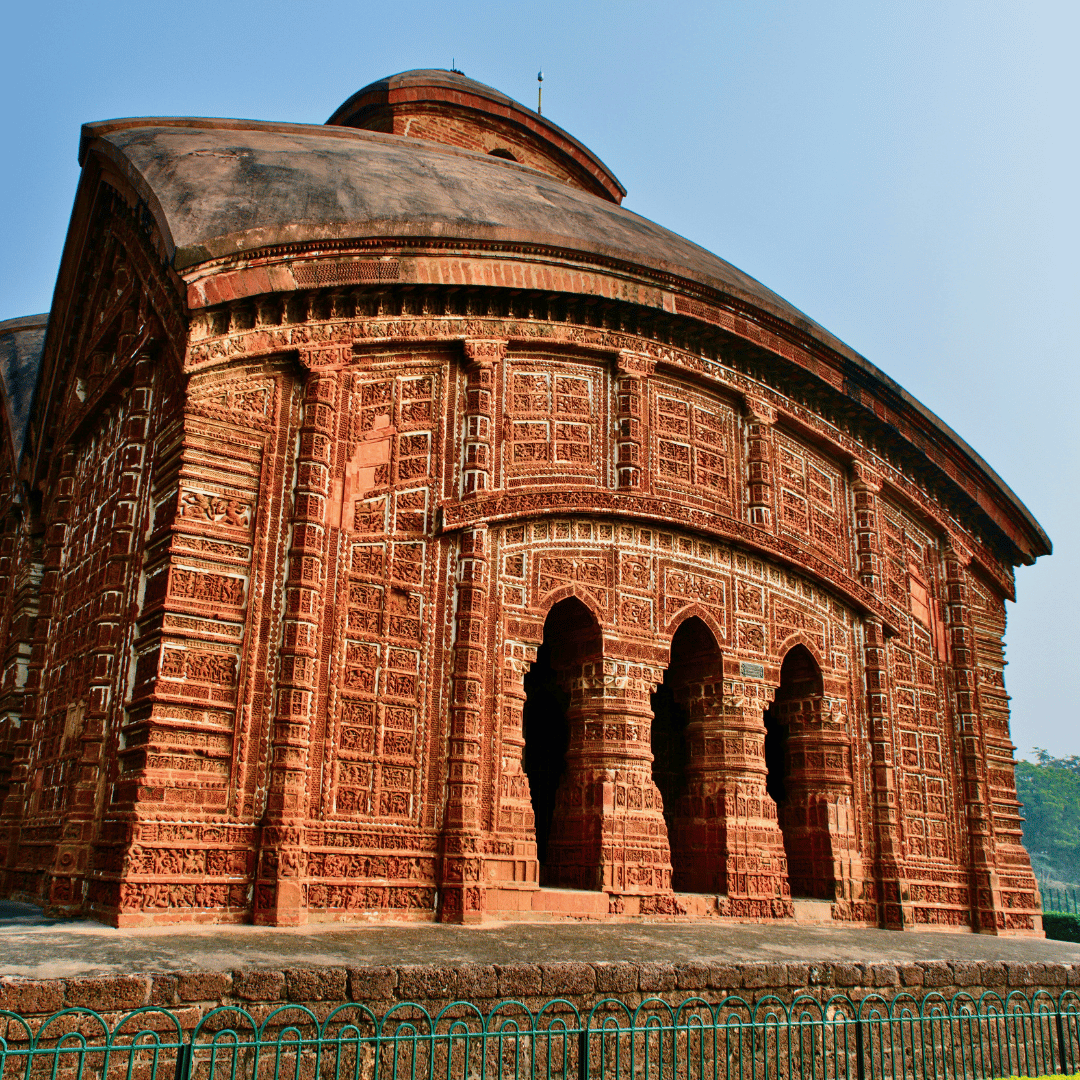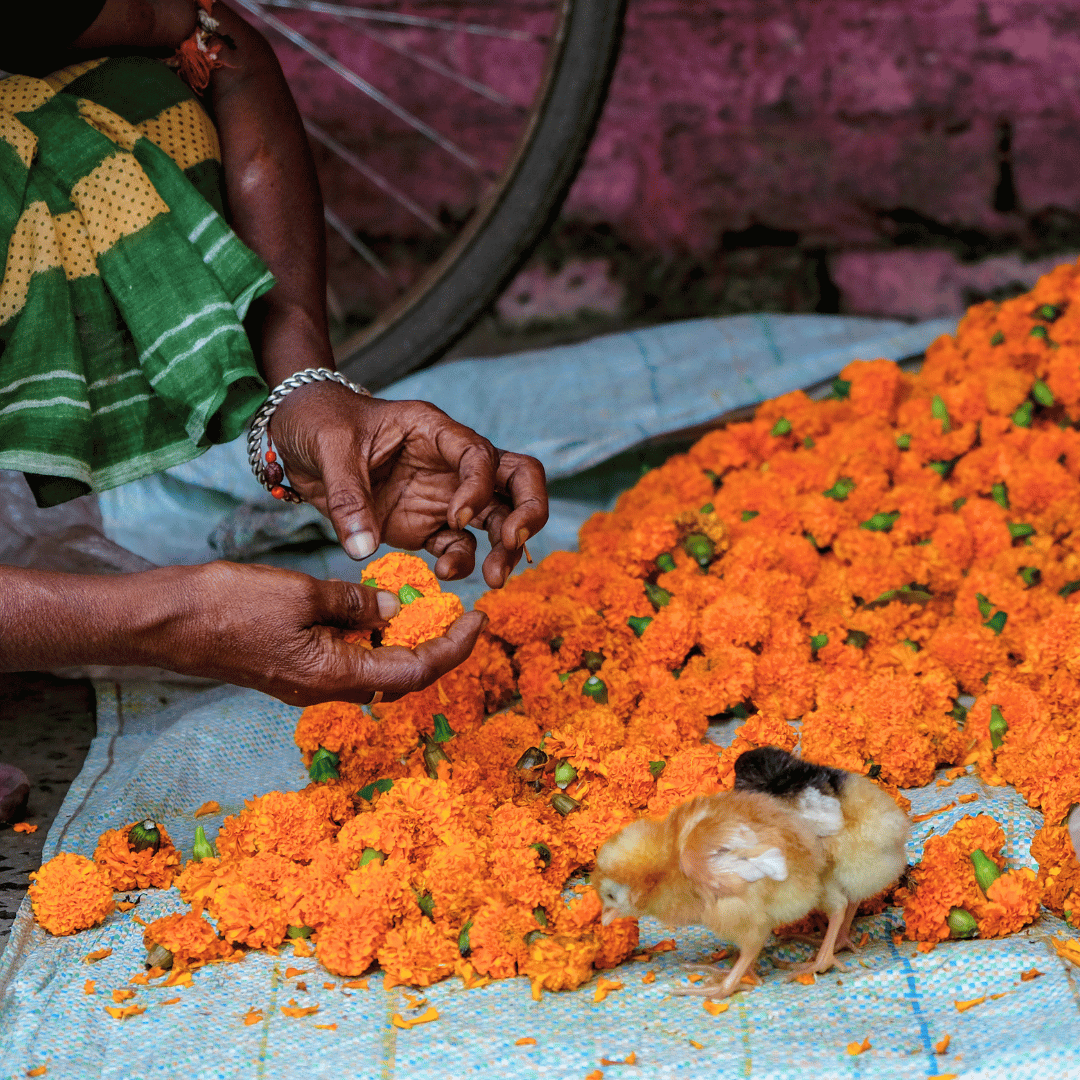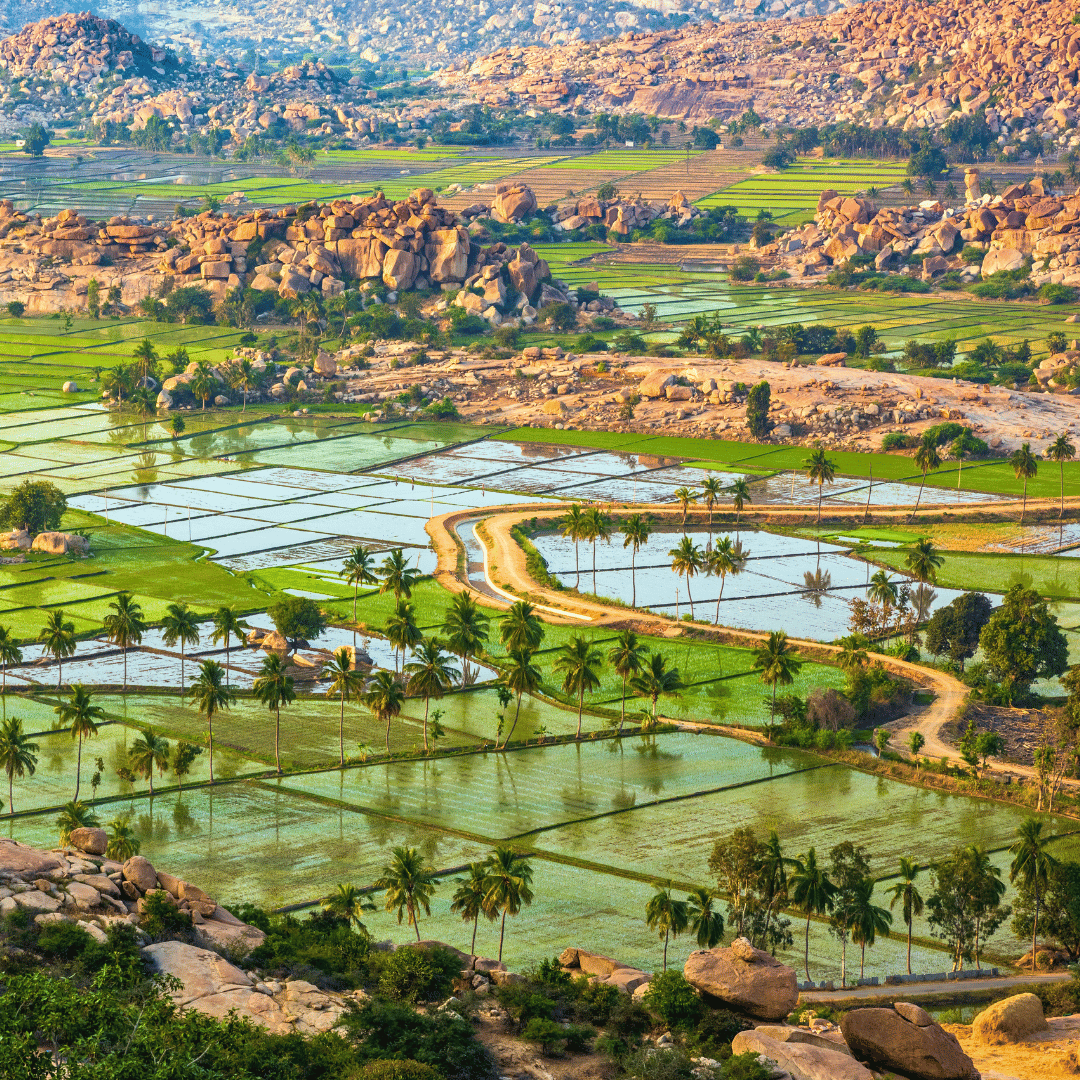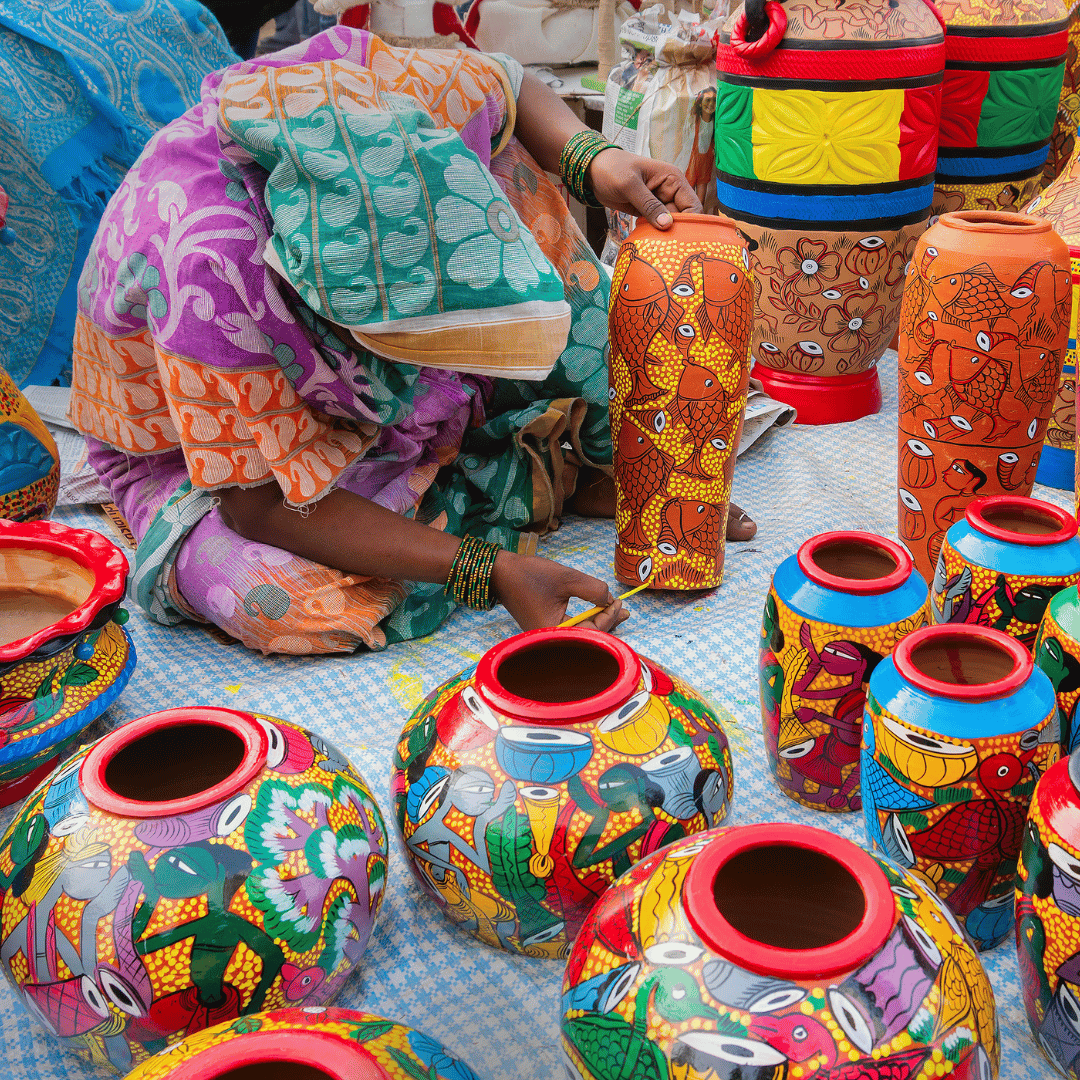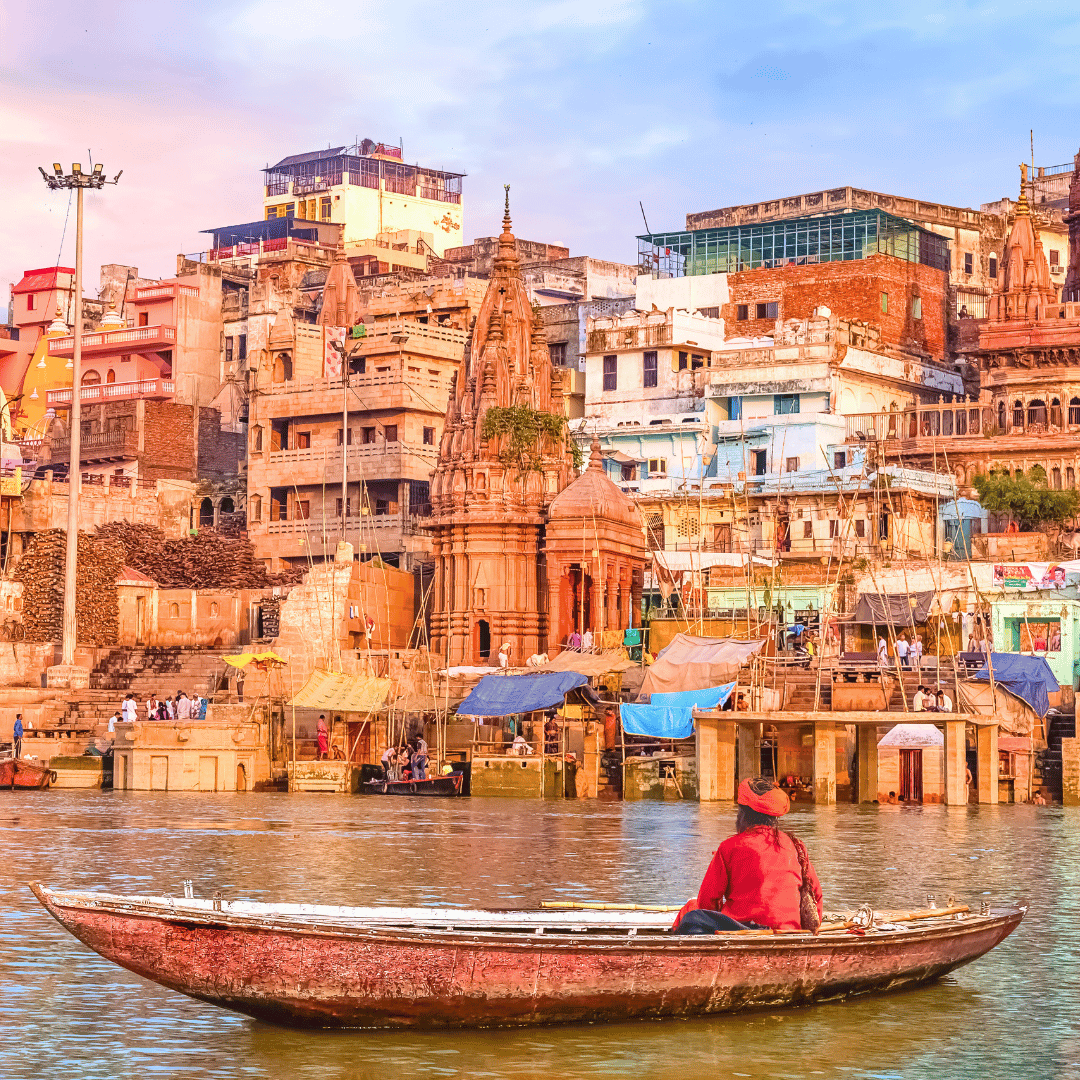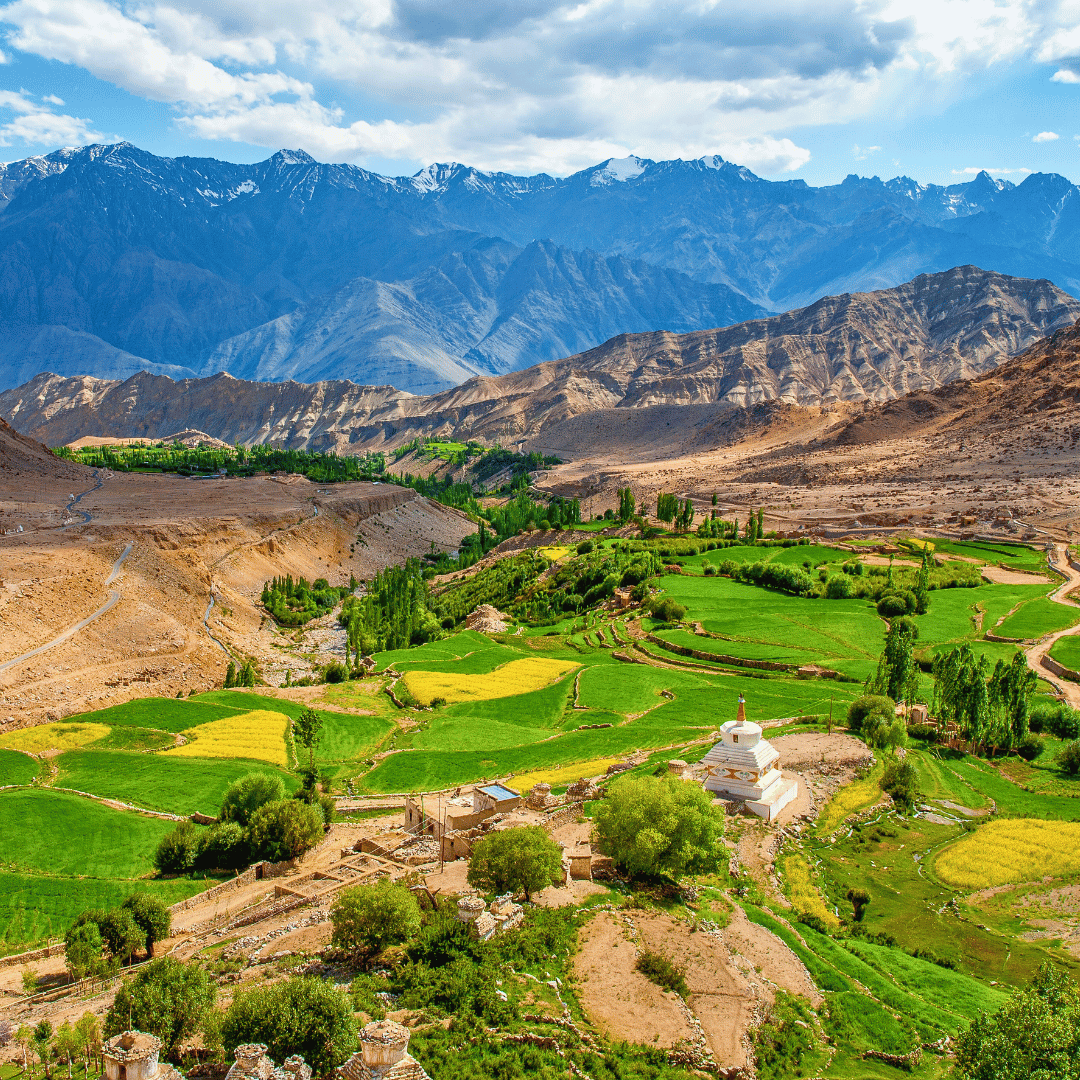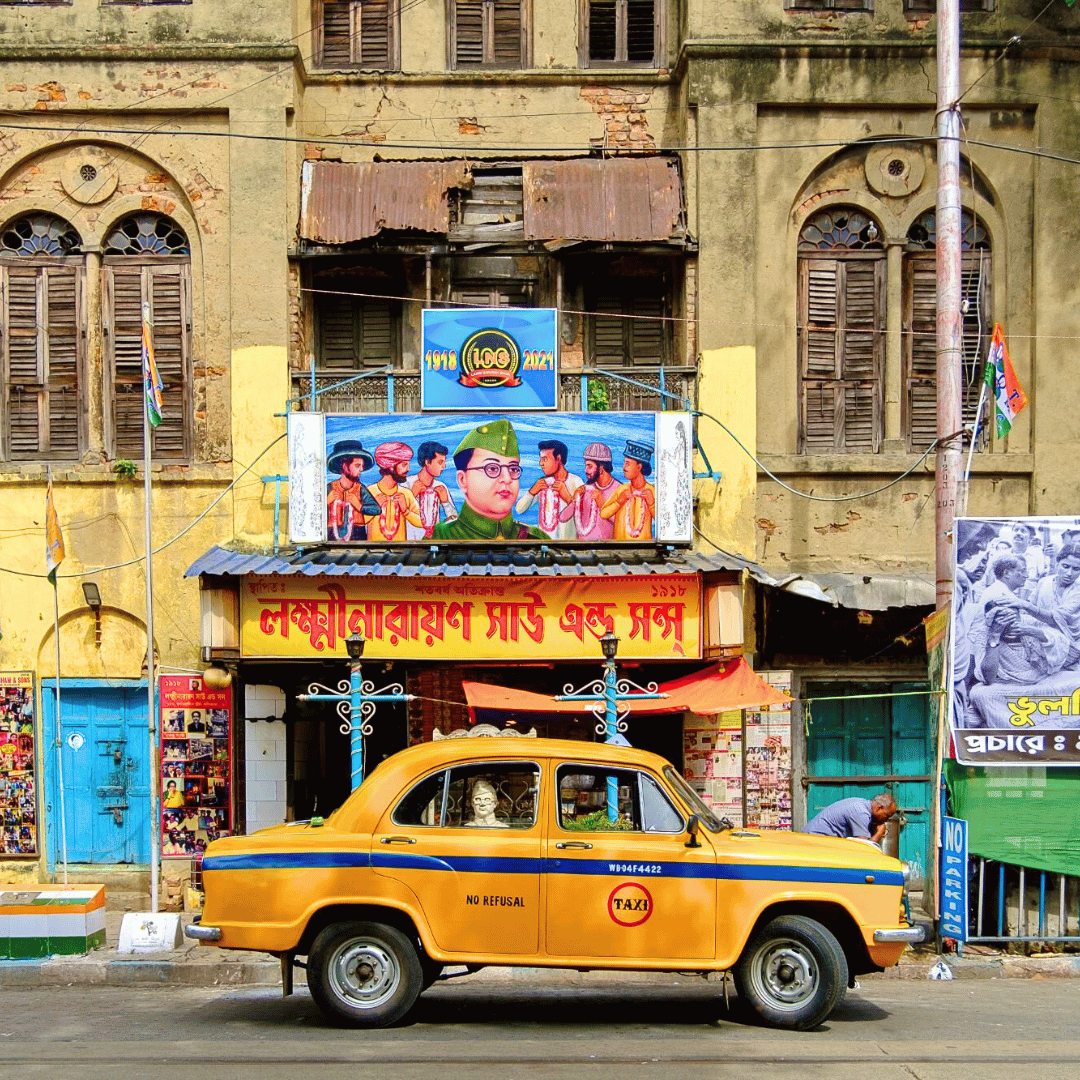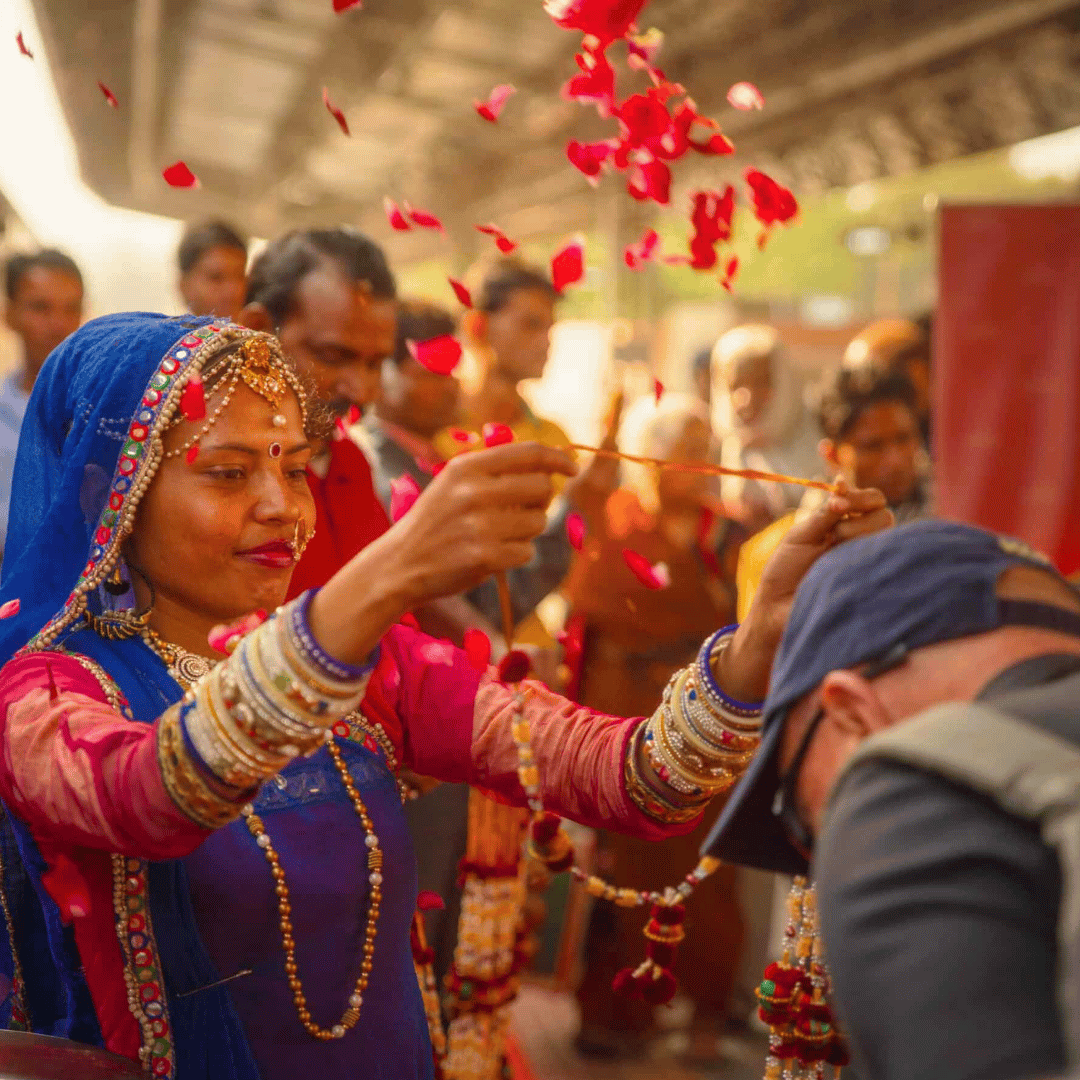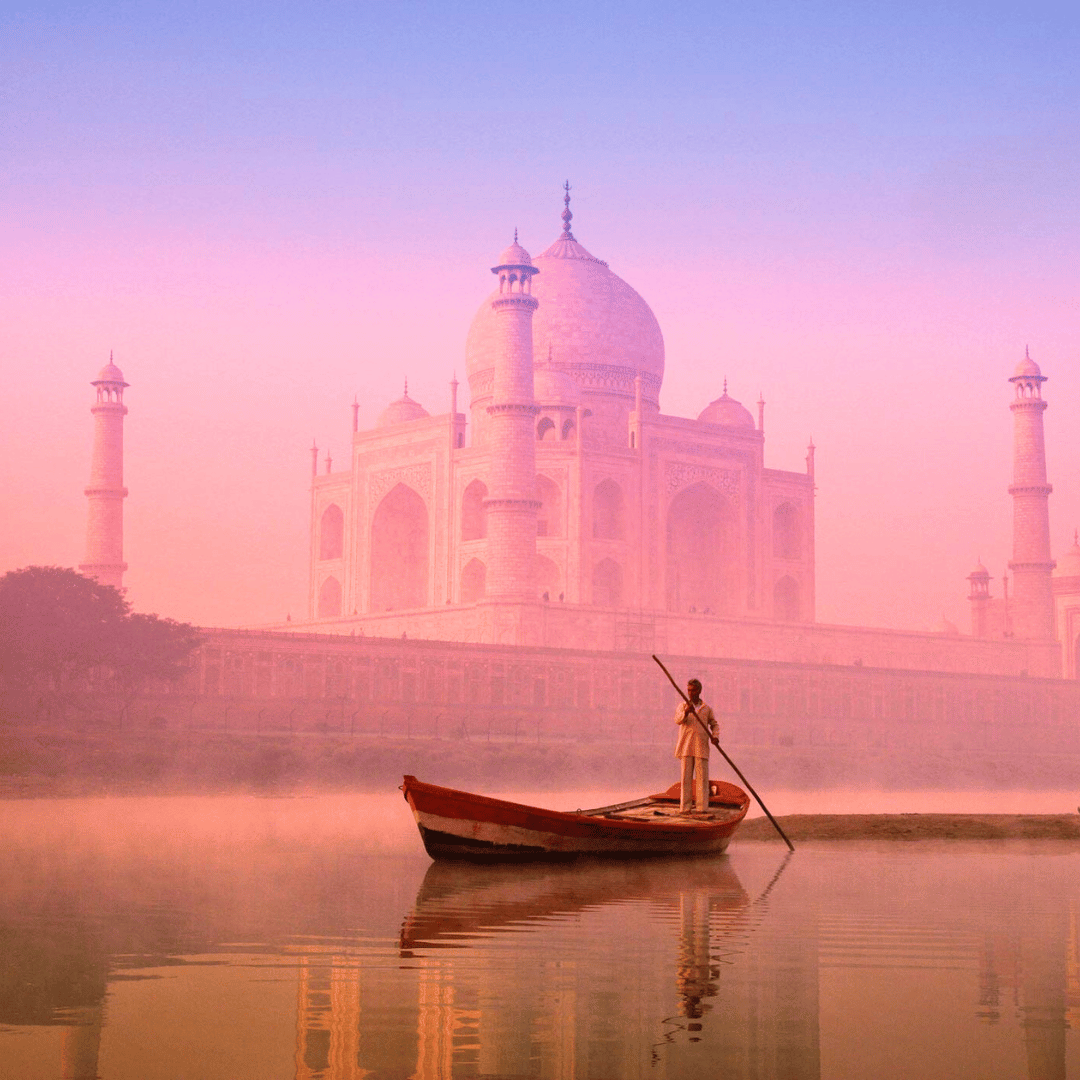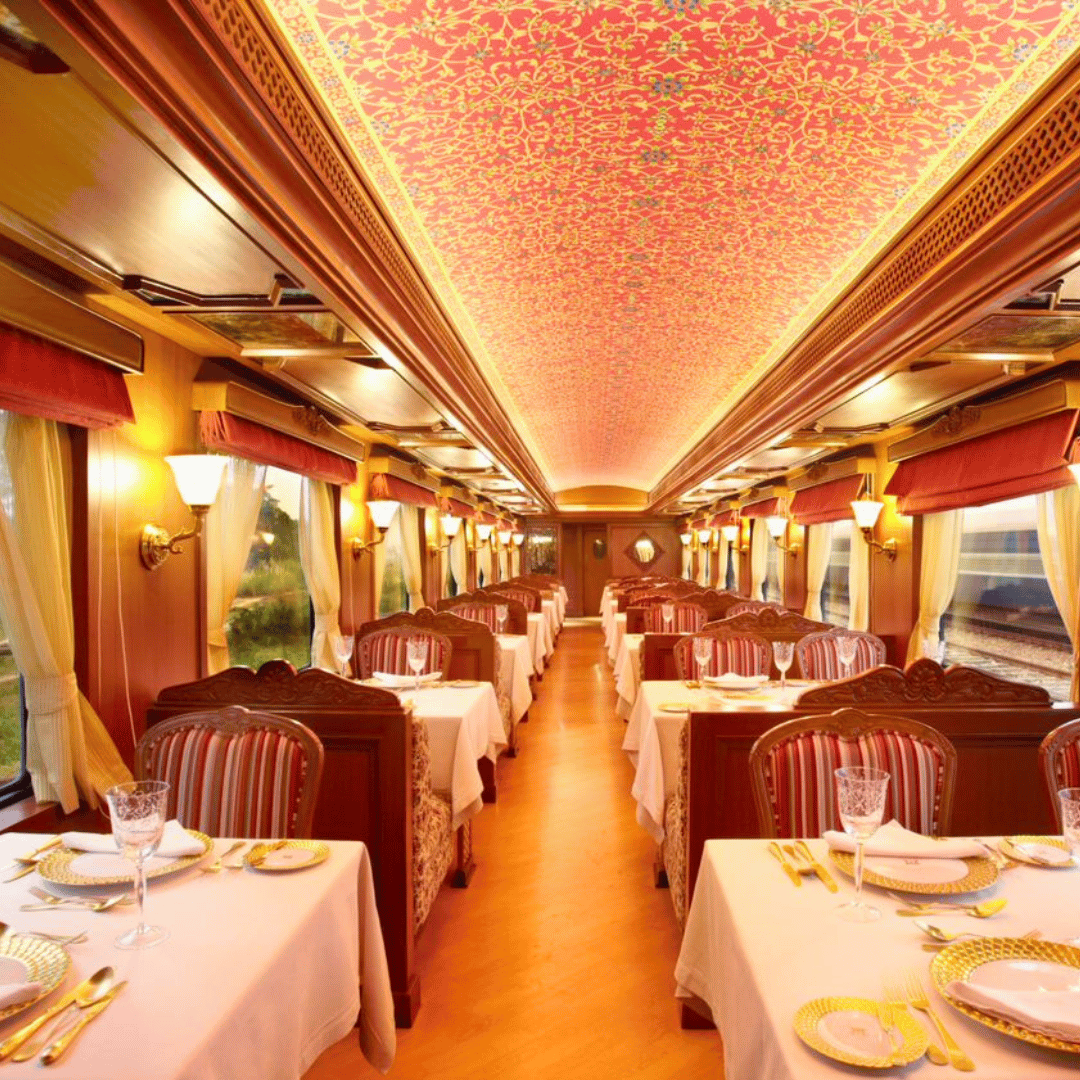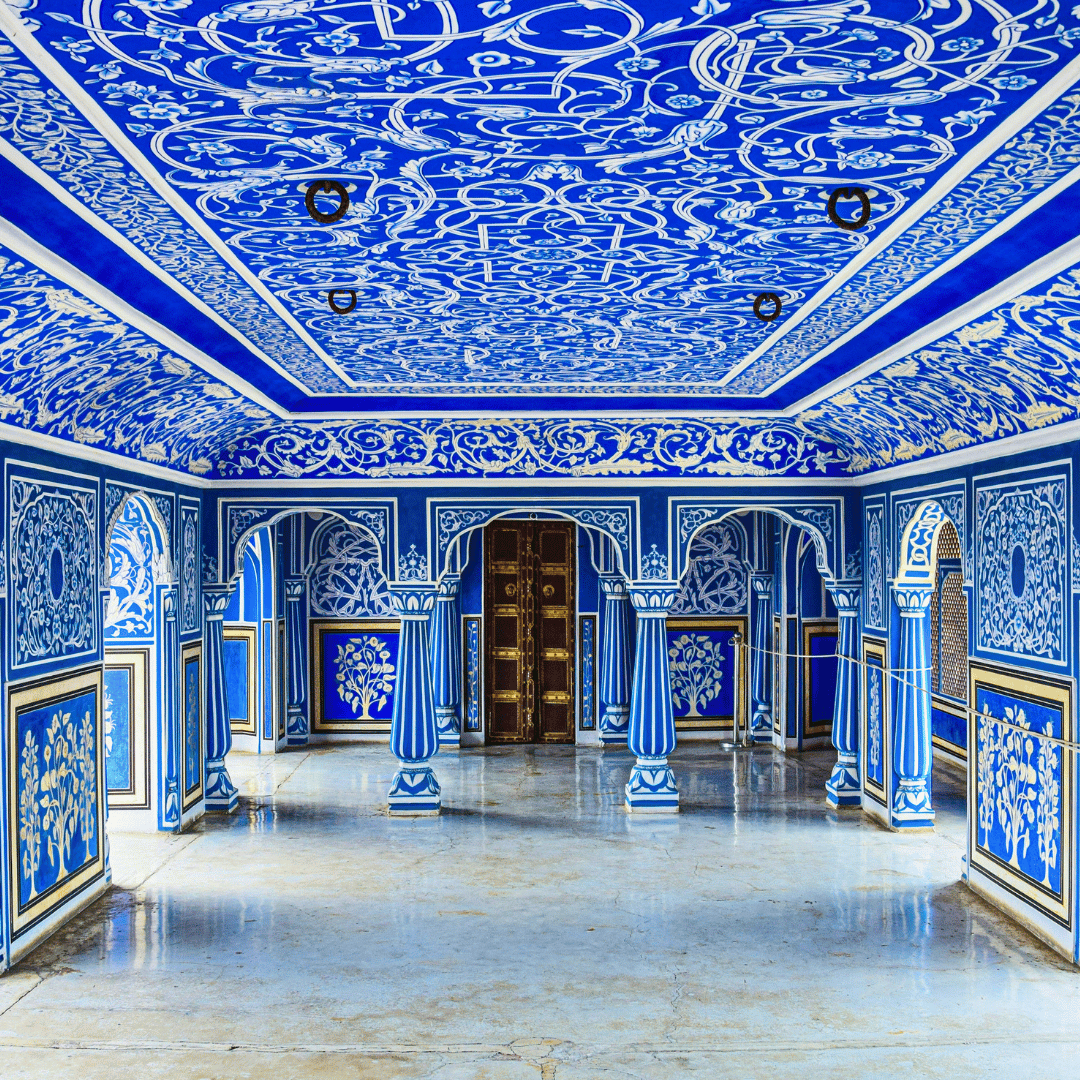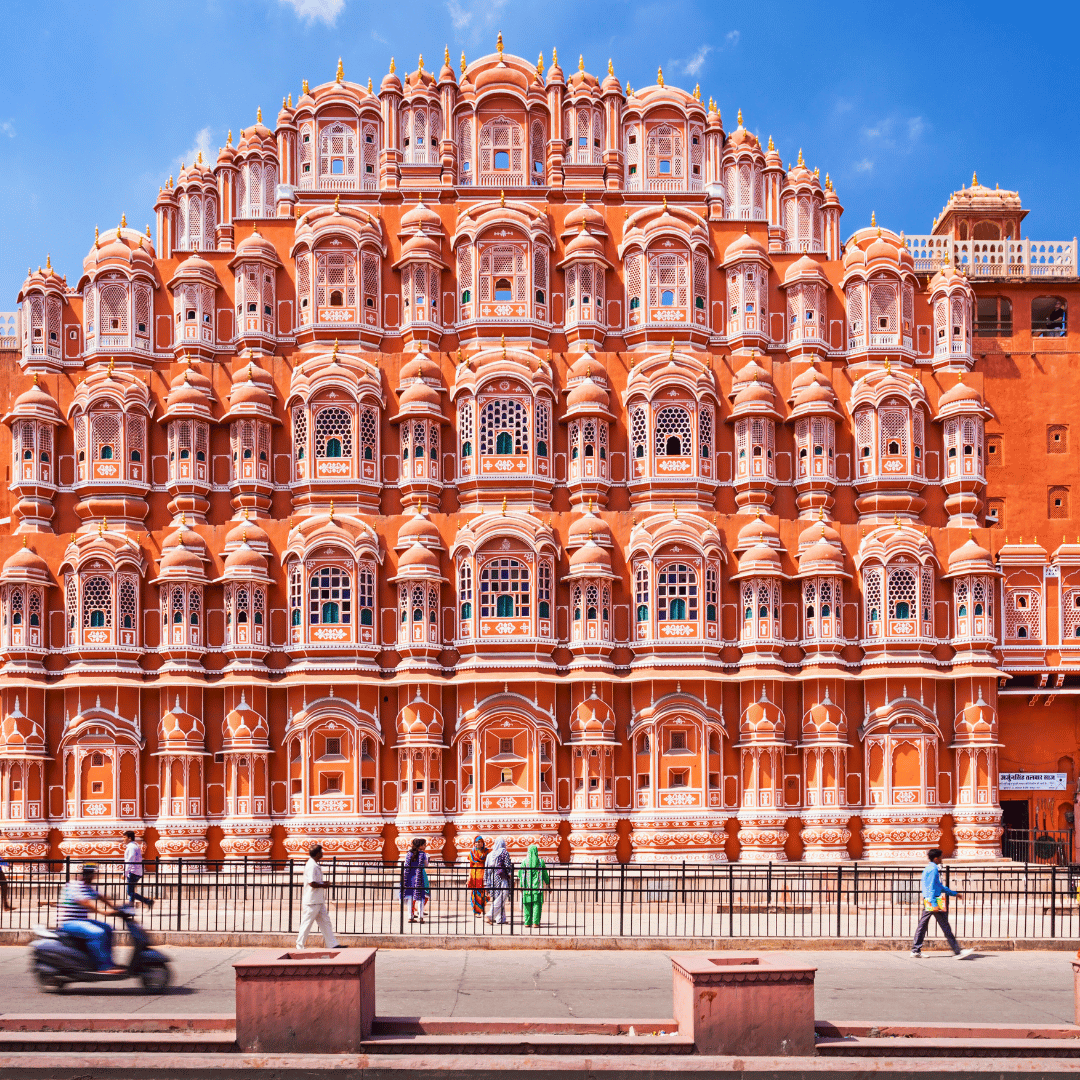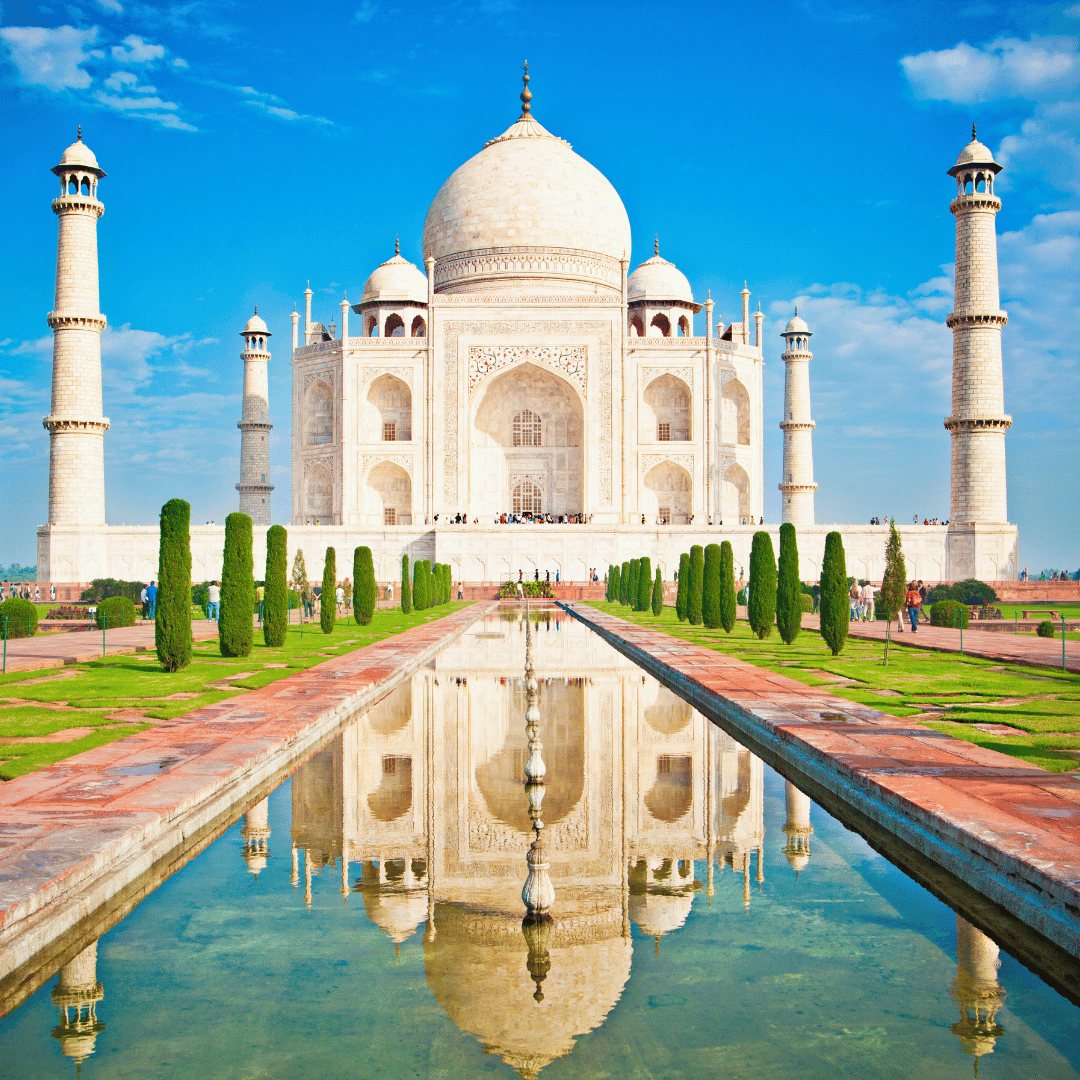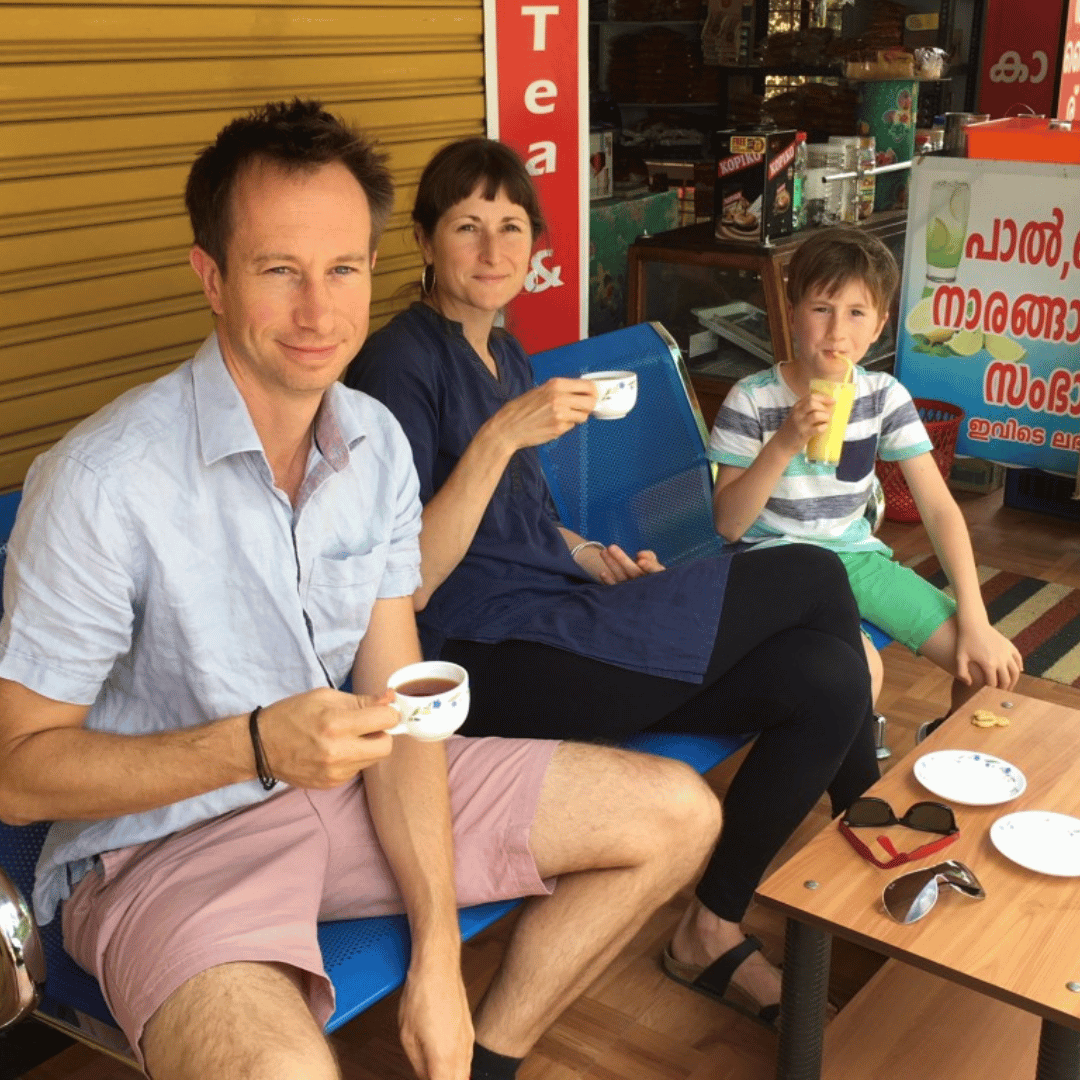Delhi To Bhopal By Rail Itinerary
-
On arrival you will be met and transferred to your hotel for check-in. Delhi, India’s capital and a sprawling city of more than 16 million people - half of whom appear to have come to the airport for your arrival - is a colourful, busy, chaotic city packed with museums, art galleries, historic sites, shops and bazaars. It would take a lifetime to discover all that is the ‘Immortal City’ of Delhi.
-
Spend the day exploring Delhi’s rich history and vibrant culture, experiencing the striking contrasts between Old and New Delhi. From centuries-old landmarks and bustling bazaars to grand colonial avenues and modern architectural marvels, today’s sightseeing offers a deep dive into the heart of India’s capital.
Begin in Old Delhi, the historic core of the city, where narrow lanes, lively markets, and grand Mughal-era monuments transport you to a different era. Visit Jama Masjid, India’s largest mosque, an architectural masterpiece commissioned by Emperor Shah Jahan. Climb its minarets for sweeping views over the rooftops of Old Delhi, where the chaotic energy of the city unfolds beneath you.
Next, take a cycle-rickshaw ride through the bustling lanes of Chandni Chowk, Delhi’s famous shopping district, where vendors sell everything from spices and textiles to jewellery and sweets. The ride through the narrow, crowded streets offers an authentic glimpse into daily life, with the aroma of street food filling the air and the constant hum of traders and shoppers creating an unforgettable atmosphere.
Pause at Raj Ghat, the simple yet powerful memorial to Mahatma Gandhi. Set amidst tranquil gardens, this black marble platform marks the spot where Gandhi was cremated, serving as a place of reflection and remembrance.
Continue into New Delhi, where the contrast is striking. Drive past stately government buildings and wide, tree-lined avenues designed by British architect Edwin Lutyens in the early 20th century. See Rashtrapati Bhavan, the official residence of the President of India, and take in the grandeur of India Gate, a towering war memorial honouring Indian soldiers.
Visit the Bahá’í Lotus Temple, a modern architectural wonder shaped like a lotus flower, symbolising unity and peace. This serene, marble-clad structure welcomes visitors of all faiths, offering a quiet space for reflection amidst the busy city.
End the day at Qutub Minar, the world’s tallest brick minaret and a UNESCO World Heritage site. Built in the 12th century, this soaring structure stands at 73 metres, surrounded by ancient ruins and intricately carved stonework that showcase Delhi’s long and complex history.
After a full day of discovery, return to your accommodation, having experienced the many layers that make Delhi one of the world’s most captivating cities.
-
Rise early for a transfer to the station, where you will board the Bhopal Shatabdi Express for the short yet comfortable journey to Mathura, one of India’s seven sacred cities. The train ride takes just over an hour, offering a glimpse of the Indian countryside as you travel towards this revered destination. Known as the birthplace of Lord Krishna, Mathura is steeped in mythology and devotion, drawing pilgrims from across India to its many temples, ghats, and holy sites.
Spend the day exploring Mathura’s rich spiritual and cultural heritage. Visit the Krishna Janmabhoomi Temple, believed to be built on the exact spot where Lord Krishna was born. The temple complex is a place of deep reverence, where the air is filled with chants and the scent of incense. Wander through the town’s winding lanes, lined with ancient temples and bustling markets selling colourful religious artefacts, sweets, and flowers used in offerings. Along the way, take in the sights and sounds of this sacred city, where spirituality is woven into everyday life.
As evening approaches, make your way to Vishram Ghat on the banks of the Yamuna River to witness the Aarthi ceremony, a mesmerising Hindu ritual of devotion. As the sun sets, priests chant prayers and ring bells while hundreds of small oil lamps, placed in leaf boats, are set afloat on the river, their golden glow reflecting on the water. This sacred ceremony is not only a moving experience for devotees but also an unforgettable sight for visitors, offering a rare moment of serenity and spiritual connection in one of India’s holiest cities.
-
Before dawn, the city of Mathura begins to stir, its sacred ghats coming alive with the rhythmic sounds of temple bells, devotional chants, and the gentle lapping of the Yamuna River. Thousands of pilgrims gather along the riverbanks, offering their early morning prayers as the first light of day reflects off the water. The soft glow of the rising sun bathes the ancient temples and ghats in warm hues, creating a truly ethereal scene. Waking early to witness this spiritual ritual offers a rare glimpse into the daily rhythm of one of India’s holiest cities, where devotion and tradition have remained unchanged for centuries.
After soaking in the peaceful morning atmosphere, transfer to the station and board the train for the short journey to Agra. As the train winds its way through the Uttar Pradesh countryside, you’ll pass through fertile farmland and small villages, offering a window into rural life in northern India. The journey is a comfortable and scenic transition between two cities deeply connected to India's rich history and culture.
Arriving in Agra, you step into a city that flourished under the rule of the Mughal Empire. During the golden age of the Mughals, Agra became a centre of learning, arts, commerce, and religion, drawing scholars, poets, and artisans from across the empire. The legacy of this era is still evident in the city’s grand architecture, from its palaces and gardens to its magnificent mosques and forts. As you begin your exploration of Agra, the influence of Mughal culture is unmistakable, setting the stage for an unforgettable journey through one of India’s most historically significant cities.
-
Wake early to witness the Taj Mahal at dawn, when the soft morning light bathes its white marble in hues of pink and gold, creating a breathtaking spectacle. Arriving early not only offers the best light for viewing but also allows you to experience the monument in relative tranquillity before the crowds arrive. Accompanied by an expert local guide, gain a deeper understanding of the Taj Mahal’s history, myths, and intricate craftsmanship. Learn about Emperor Shah Jahan’s devotion to his beloved wife Mumtaz Mahal, which inspired this masterpiece, and admire the delicate marble inlay work, intricate calligraphy, and perfectly symmetrical gardens that enhance its ethereal beauty. After soaking in the grandeur of one of the world’s most iconic landmarks, return to your hotel for a leisurely breakfast.
Later in the day, explore Agra Fort, a UNESCO-listed architectural marvel that stands as a testament to the power and sophistication of the Mughal Empire. Built primarily of red sandstone, this imposing fortress was once the residence of emperors and a strategic military stronghold. Within its massive walls, discover a labyrinth of palaces, audience halls, and courtyards, each reflecting a unique blend of Persian, Hindu, and Islamic architectural influences. Walk through the elegant Diwan-i-Khas (Hall of Private Audience), where the emperor met dignitaries, and the grand Diwan-i-Am (Hall of Public Audience), where justice was dispensed. From the fort’s ramparts, gaze across the Yamuna River for another striking view of the Taj Mahal, a poignant sight from the very place where Shah Jahan spent his final years in captivity, longing for the monument he built in memory of his love.
-
Transfer to the station for the one hour and fifteen-minute journey to Gwalior, a city rich in history yet often overlooked by travellers exploring northern India. As the train moves through the fertile Gangetic plain, you’ll pass rural landscapes dotted with villages, farms, and the occasional temple spire rising in the distance. Gwalior, though lesser visited than its more famous counterparts, is a city steeped in royal heritage, with an impressive fort that dominates its skyline. The journey itself is a comfortable and scenic introduction to this historic destination, where centuries of dynastic rule have left behind a wealth of architectural and cultural treasures.
On arrival at Gwalior station, you will be met and transferred to your accommodation - a beautifully restored palace hotel that once belonged to the city’s former royal family. Set amidst sprawling gardens and elegant courtyards, the hotel retains its regal charm, with its original architecture, grand hallways, and vintage furnishings evoking a bygone era. Staying in such a place offers a rare glimpse into the opulent lifestyle of the rulers of Gwalior, whose influence shaped the city into a thriving centre of art, music, and culture. Enjoy a warm welcome and take some time to settle in, perhaps relaxing with a cup of masala chai while admiring the palace’s exquisite details.
Later, step outside to take in Gwalior’s unique atmosphere, where the past and present blend seamlessly. Unlike the fast-paced energy of larger cities, Gwalior has a more laid-back charm, allowing for a deeper, more relaxed exploration of its historic sites. The city’s crowning jewel, Gwalior Fort, soars high above on a sandstone plateau, its imposing walls guarding centuries of stories. From its ancient temples and palaces to its deep-rooted musical traditions, Gwalior promises an enriching experience for those who take the time to uncover its hidden wonders.
-
This is a unique opportunity to experience a different side of India, away from the more well-known cities and landmarks. Gwalior offers a fascinating glimpse into the country’s royal past, with its grand fort, historic palaces, and cultural heritage still largely untouched by mass tourism. The city’s atmosphere is more relaxed than the bustling metropolises of Delhi and Agra, allowing you to take in its rich history at a more leisurely pace.
Spend the morning exploring Gwalior Fort, an architectural masterpiece that dominates the city’s skyline. Stretching for nearly three kilometres along a 100-metre-high sandstone and basalt hill, this imposing stronghold has withstood centuries of battles, dynastic rule, and historical transformations. Its 10-metre-high outer walls enclose a remarkable collection of temples, palaces, and ancient step wells. Marvel at the vibrant blue-tiled façade of the Man Singh Palace, a stunning example of Rajput architecture adorned with intricate carvings and colourful ceramic tiles. Wander through the serene Sas Bahu Temples, where detailed stone carvings showcase the artistry of the 11th century, and visit the Teli ka Mandir, an imposing Hindu temple blending Dravidian and North Indian architectural styles.
As night falls, return to the fort for the sound and light show, held in its open-air amphitheatre. This immersive experience brings Gwalior’s history to life, with dramatic narration, music, and colourful lighting that illuminates the fort’s ancient walls. As the story of Gwalior unfolds against the backdrop of its magnificent architecture, you’ll gain a deeper appreciation for the city’s past and its role in shaping India’s history. Sitting beneath the stars, surrounded by centuries-old stone, this evening promises to be a memorable highlight of your time in Gwalior.
-
After breakfast, transfer to the station for the one-hour train journey to Jhansi, a city steeped in history and known for its role in India’s first war of independence. As you travel, watch the landscapes shift from bustling towns to open countryside, offering a glimpse into rural life in northern India. Upon arrival in Jhansi, you will be met at the station and embark on a short 30-minute drive to Orchha, a hidden gem tucked away on a rocky island along the Betwa River.
Orchha, meaning "hidden place", remains one of India’s best-preserved historical sites, offering a captivating blend of Mughal and Rajput architecture. Once the capital of the Bundela Rajput kings, this medieval town is dominated by a stunning collection of 17th-century palaces, temples, and cenotaphs, all set against a scenic riverside backdrop. The grandeur of Jahangir Mahal, with its delicate jharokha balconies and ornate domes, stands as a testament to the region’s royal legacy, while the towering spires of Chaturbhuj Temple create an awe-inspiring silhouette against the sky.
Despite its architectural brilliance, Orchha remains wonderfully uncrowded, offering a rare opportunity to explore at a relaxed pace. Wander through its ancient structures, listen to the calls of temple bells, and take in the serenity of the Betwa River, which flows gently past the town’s historic monuments. Whether marvelling at the exquisite Mughal-inspired designs or absorbing the tranquil setting, Orchha promises an enchanting step back in time.
-
Spend the morning exploring Orchha’s architectural and spiritual treasures, where centuries-old temples and royal monuments stand as a testament to the region’s rich history. Begin with a visit to the Ram Raja Temple, the only temple in India where Lord Ram is worshipped as a king rather than a deity. Its soaring spires and palace-like structure make it one of Orchha’s most distinctive landmarks, drawing devotees from across the country. Nearby, the Lakshmi Narayan Temple is equally fascinating, known for its well-preserved murals that depict scenes from Hindu mythology, as well as historic battles and royal court life. The intricate frescoes, painted in vibrant natural pigments, offer an extraordinary glimpse into the artistic traditions of the Bundela dynasty.
A short walk brings you to the Chhatris, a striking collection of 14 cenotaphs that line the banks of the Betwa River. These grand structures were built as memorials to Orchha’s former rulers, their domes and pillars creating a dramatic silhouette against the sky. The peaceful setting by the water, with reflections of the cenotaphs shimmering on the surface, makes this an ideal spot to pause and take in the beauty of the landscape. If time permits, consider crossing the river for a different perspective or simply sitting along the banks to soak in the atmosphere.
In the afternoon, take the opportunity to engage with local life in and around Orchha. A short walk leads to the nearby village of Ganj, where you can observe daily life, interact with villagers, and gain insight into rural traditions. The walk offers a refreshing change of pace, passing through fields and simple homes where locals continue to practise age-old crafts and farming methods. Whether admiring the architecture, exploring the temples, or connecting with the community, today’s experiences provide a deeper appreciation for Orchha’s cultural and historical charm.
-
Transfer to the station for the three-hour journey to Bhopal, a city that blends history, culture, and natural beauty. As the train moves south, watch the landscape shift from the riverbanks of Orchha to the undulating plains of Madhya Pradesh, dotted with small villages and farmlands. The journey offers a glimpse into rural India, with farmers tending their fields and local markets bustling near the railway stations along the way. Arriving in Bhopal in the early afternoon, you’ll be met at the station and transferred to your accommodation - a stunning 19th-century palace nestled on the scenic slopes of Shamla Hill.
Your home for the next three nights, this heritage palace offers a rare opportunity to experience the luxury and extravagance that was once reserved for the Nawabs of Bhopal. Set within five acres of lush gardens filled with fragrant bougainvillea and manicured lawns, the property exudes a regal charm that reflects the grandeur of a bygone era. Elegant archways, intricate stone carvings, and antique furnishings transport you back to the time when Bhopal’s royal families ruled from this very estate.
Take time to settle in and explore the palace’s tranquil surroundings. Stroll through the sprawling gardens, enjoy a cup of chai on the veranda, or simply relax and admire the breathtaking views over the city below. The evening is yours to unwind, whether indulging in a heritage-inspired dining experience, taking in the peaceful ambience, or preparing for the exciting explorations that await in Bhopal’s historic and cultural heart.
-
Bhopal is a city where history and tradition blend seamlessly, its skyline punctuated by grand mosques and its streets alive with vibrant markets. The city’s old quarter, dominated by its rich Islamic heritage, is a fascinating place to explore, offering a glimpse into Bhopal’s past as a princely state ruled by the legendary Begums of Bhopal.
Begin your morning with an unforgettable experience - witnessing the dawn azan (call to prayer) at Taj-ul-Masjid, one of India’s largest mosques. This pink-washed masterpiece, with its towering minarets and immense courtyard, takes on an ethereal glow in the early morning light. As the rhythmic chants of the azan echo through the air, the mosque’s domes and archways create a serene yet powerful atmosphere, drawing worshippers from across the city for their morning prayers.
After breakfast, continue your exploration of Bhopal’s Islamic landmarks with a visit to Jami Masjid, an elegant mosque distinguished by its gold-spiked minarets, intricate carvings, and striking symmetry. Nearby, the Moti Masjid, or ‘Pearl Mosque’, built in the 19th century, stands out with its gleaming white marble domes, reminiscent of Delhi’s Jama Masjid but on a more intimate scale.
From here, dive into the bustling energy of Chowk Bazaar, the heart of Old Bhopal. This lively marketplace is a sensory feast, filled with narrow lanes lined with stalls selling handcrafted jewellery, embroidered textiles, aromatic spices, and traditional perfumes (ittar). Wander past silver merchants, paan sellers, and artisans at work, absorbing the vibrant mix of sights, sounds, and scents. Whether browsing for souvenirs, sampling street food, or simply soaking in the old-world charm, the bazaar offers an authentic glimpse into daily life in Bhopal’s historic core.
-
Just 46 kilometres from Bhopal lies the small and unassuming village of Sanchi, home to one of India’s most significant and best-preserved Buddhist sites. This ancient complex, perched on a hilltop, is a UNESCO World Heritage Site that offers a remarkable insight into the evolution of Buddhist architecture and art over more than a thousand years. Unlike many other religious sites in India, Sanchi was not directly associated with Buddha’s life but became a major centre of Buddhist learning and devotion, drawing monks and pilgrims from across the subcontinent.
At the heart of the complex is the Great Stupa, originally commissioned in the 3rd century BC by Emperor Ashoka, one of India’s most influential rulers and a key figure in the spread of Buddhism. Over time, additional stupas, monasteries, and intricately carved gateways were added, reflecting the changing styles of Buddhist art and architecture across centuries. The four toranas (ornamental gateways), built in the 1st century BC, are among the finest examples of early Indian stone carvings, depicting scenes from Buddha’s life, legends, and Jataka tales with extraordinary detail and craftsmanship.
Spend the morning exploring this serene and historically rich site, wandering among ancient ruins that tell the story of Buddhism’s growth in India. Admire the delicate carvings that illustrate Buddha’s teachings, sit quietly in the peaceful surroundings, and imagine the thousands of monks who once studied and meditated here. The sweeping views from the hilltop add to the experience, making Sanchi a place of both spiritual and historical significance. After taking in the wonders of this extraordinary site, return to Bhopal, reflecting on the deep cultural and religious heritage that continues to shape India today.
-
After breakfast, set off on the four-hour journey to Satpura, a region known for its rich biodiversity and untouched wilderness. Your accommodation is a thoughtfully designed conservation-focused lodge, located near the Satpura National Park and Tiger Reserve. With a strong emphasis on sustainability and wildlife protection, the lodge blends harmoniously with its surroundings, offering an immersive nature experience.
Spread across 30 acres of dense forest, the lodge provides a rare opportunity to explore the wilderness away from the crowds. Upon arrival, take the afternoon to settle in and soak up the tranquil atmosphere. Relax on the private deck of your cottage, where you can take in sweeping forest views, listen to the calls of exotic birds, and enjoy the peaceful rhythm of the natural world around you. Whether you choose to unwind with a book, sip on a cup of tea, or simply sit back and observe the shifting light through the trees, this is the perfect introduction to Satpura’s pristine landscapes.
-
Satpura offers a range of wildlife experiences, allowing you to explore its diverse landscapes and rich biodiversity in a way that few other reserves in India can. Unlike many national parks where visitors are confined to vehicles, Satpura is one of the rare places where you can walk inside the park, offering a truly immersive and thrilling way to observe nature up close. Today, take advantage of these unique opportunities and experience the park’s wilderness from different perspectives.
Choose from a variety of safari options, including nature walks, guided treks, jeep safaris, and motorboat excursions along the waterways. For those looking for a more traditional safari experience, a jeep safari provides access to deeper parts of the park, increasing your chances of spotting elusive wildlife such as leopards, sloth bears, and the majestic Bengal tiger. Alternatively, explore the park by boat, gliding silently along the river, where you might see mugger crocodiles basking on the banks, otters playing in the water, or a variety of bird species perched in the trees.
For a truly unforgettable experience, venture into the dense jungle on foot with an experienced naturalist. Walking safaris allow you to observe wildlife tracks, hear the rustling of animals in the undergrowth, and fully appreciate the sights, sounds, and scents of the forest. Few parks in India permit this intimate form of exploration, making Satpura a rare and remarkable destination for nature enthusiasts.
-
Today, you may wish to take a break from wildlife activities and explore the cultural side of the region with an escorted walk or drive through nearby villages. These small, traditional settlements offer a glimpse into rural life in central India, where time moves at a slower pace, and communities continue to follow age-old traditions. As you wander through the villages, admire the distinctive architectural styles, from mud-brick homes with intricately painted facades to simple, thatched-roof dwellings. Many villages are known for their local handicrafts, and you may have the chance to see artisans at work, creating handwoven textiles, pottery, or wooden carvings that reflect the rich cultural heritage of the area.
To conclude your stay in Satpura, enjoy a leisurely evening boat cruise, a perfect way to take in the park’s beauty from the water. As you glide along the river’s calm surface, keep an eye out for kingfishers, herons, and other birdlife gathering along the banks as the sun begins to set. The peaceful ambience of the river, combined with the changing colours of the sky, makes for a relaxing and memorable end to your time in this remarkable wilderness.
-
Return to Bhopal today. From here transfer to the airport for a flight to Delhi or Mumbai for connecting flights home or to another Indian destination. Alternatively, you may return to Delhi on the Bhopal Shatabdi, in which case you have a choice of making the journey during the day or overnight and arriving in Delhi the following morning.




